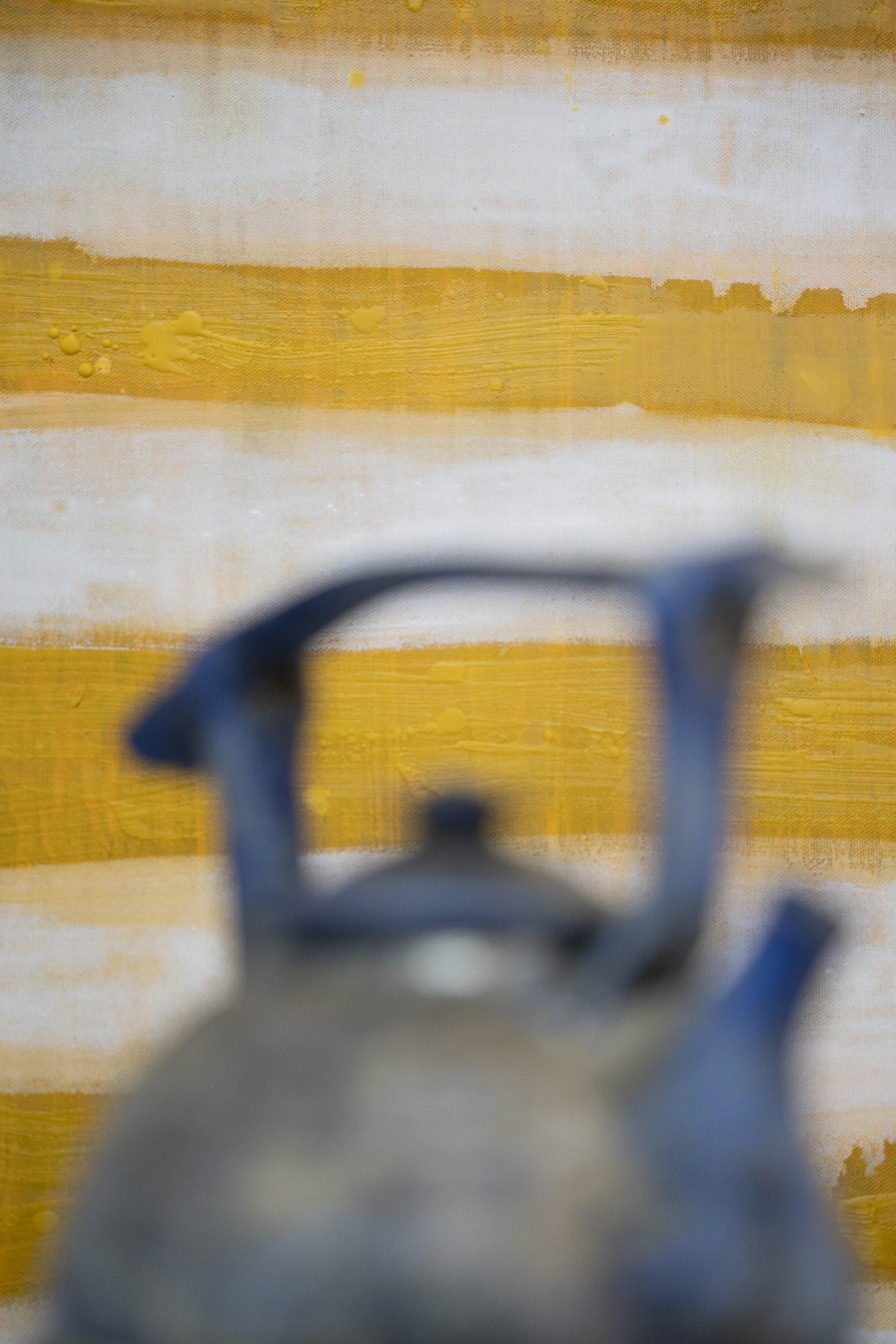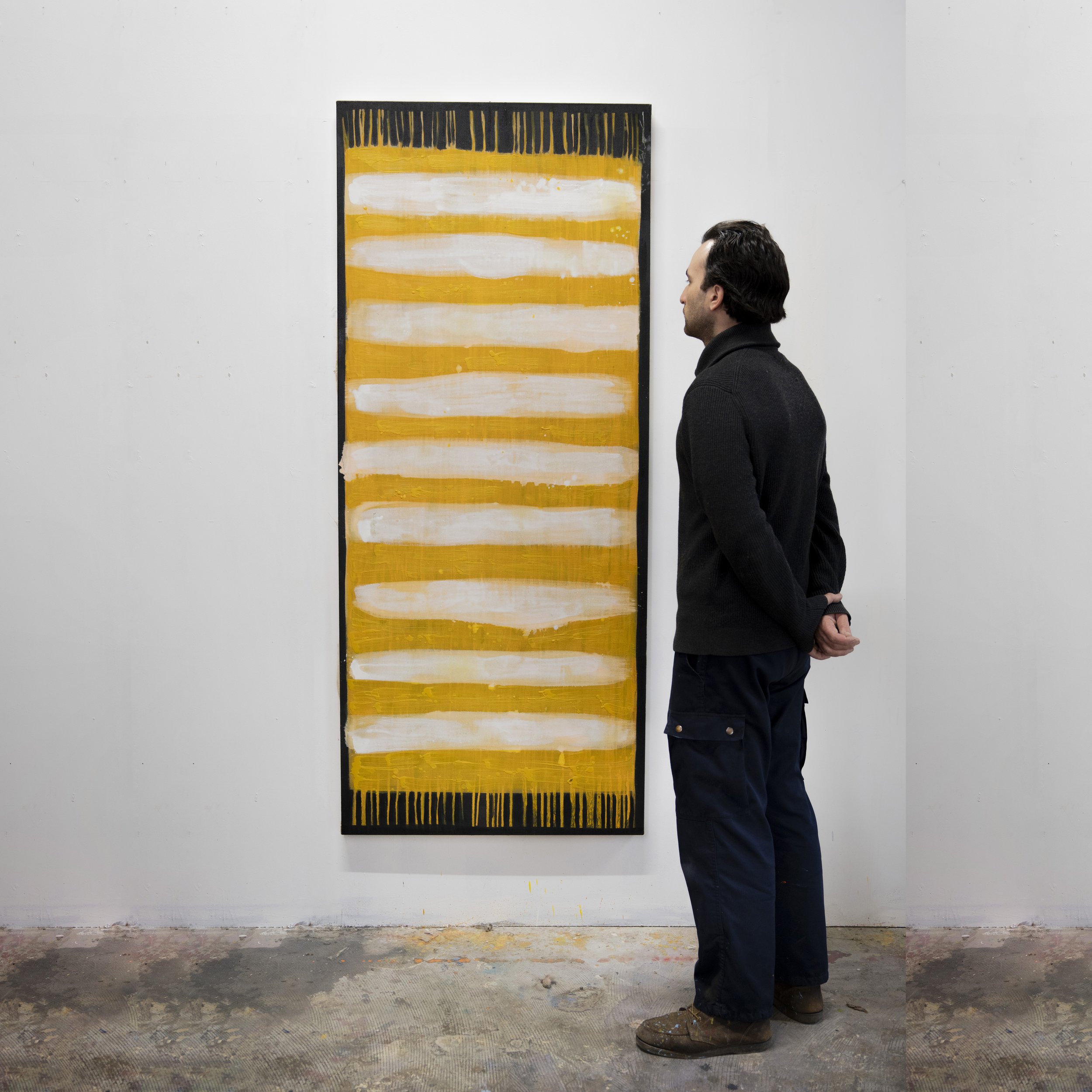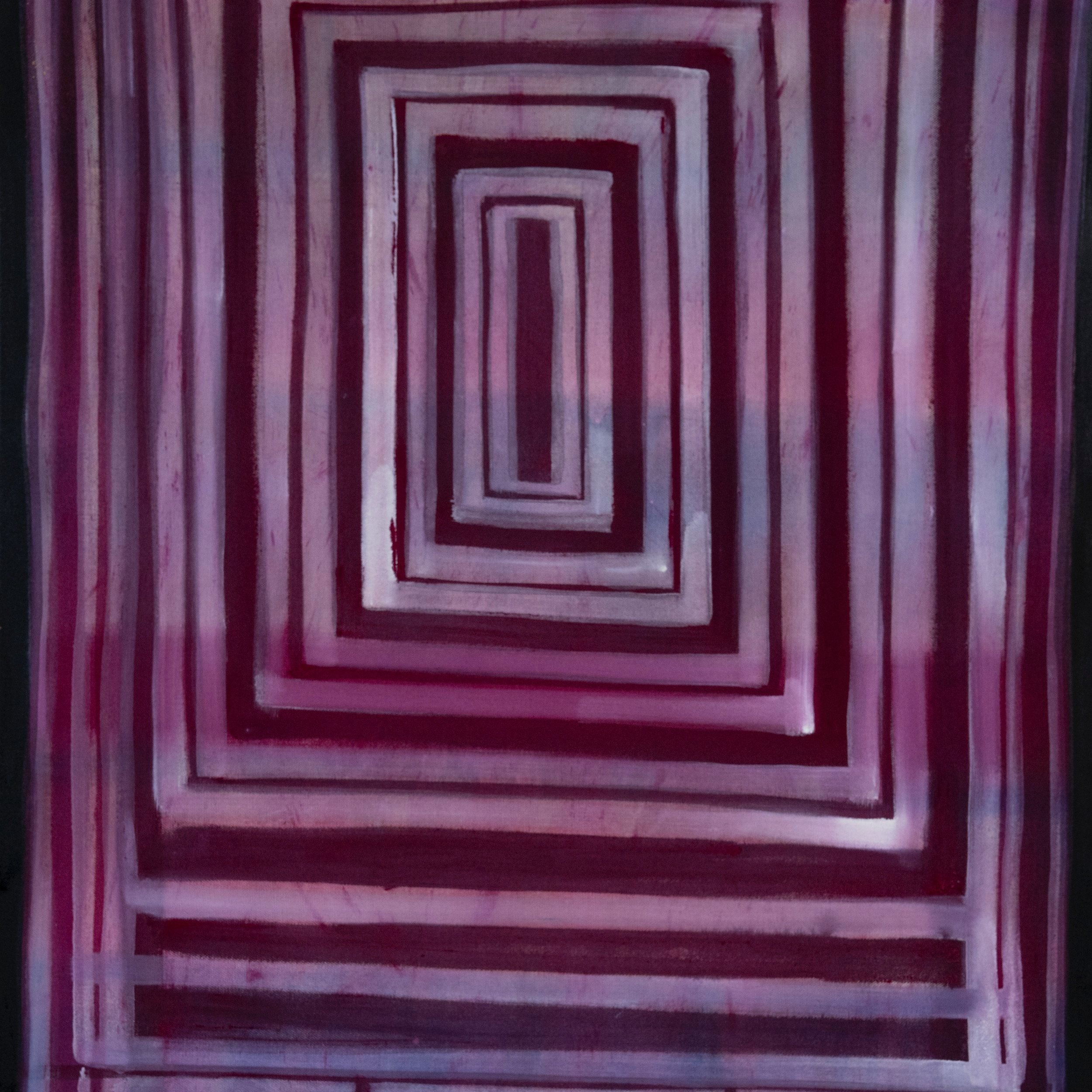Maxime Testu, Tapis jaune et blanc



Maxime Testu, Tapis jaune et blanc
Tapis jaune et blanc
Pigments, acrylique, encaustique
2024
H 190 x L 80 cm
Yellow and white carpet
Pigments, acrylic, encaustic
2024
H 190 x W 80 cm
Maxime Testu
Le tapis comme motif est arrivé dans le travail de Maxime Testu après avoir entamé une recherche sur les outils agricoles et les objets usuels ayant peuplé son enfance à la campagne, présentés lors de son exposition « Une Pastorale » en 2024. En leur donnant des proportions nouvelles et en les travaillant en lavis de couleurs cernés de lignes au fusain, il conduit notre regard à se renouveler sur des formes pourtant familières. Leurs dimensions nous invitent presque à les oublier en tant qu’objets. C’est précisément ce qui se produit dans l’approche de ses tapis.
Le code pictural qu’il met en place est simple, le motif apparaît selon ce que permet le pinceau plat, le spalter, pour tracer des bandes de couleurs dont la
largeur est prédeterminée par les outils du peintre et les motifs correspondent seulement à une alternance de largeur, longueur et orientation de ligne. Le dessin enestapparemmentabstrait.Ce n’est qu’une touche finale qui détermine l’être-tapis : en bordure du tableau, le contour à franges noires fait d’une peinture all-over sans bord ni centre un objet domestique reconnaissable entre tous. Ces surfaces planes donnent à repenser le rapport à la ligne tel que Tim Ingold le problématise en plaçant d’un côté la ligne obtenue par le tissage face à la trace obtenue par le passage de la matière ou son retrait. Le tapis noué est composé par l’ entrelacs de fils qui additionnés, forment une surface plane alors que le tapis peint est obtenu par la trace du passage du pinceau et de l’encaustique.
Maxime Testu
Maxime Testu's use of carpets as a motif came about after he began researching the farm implements and everyday objects that populated his childhood in the countryside, presented in his exhibition “Une Pastorale” in 2024. By giving them new proportions and working with colored washes surrounded by charcoal lines, he leads us to take a fresh look at these familiar forms. Their dimensions almost invite us to forget them as objects. This is precisely what happens when we approach his carpets.
The pictorial code he sets up is simple: the motif appears according to what the flat brush, the spalter, allows, tracing bands of color whose width is predetermined by the tools used.
The motifs correspond only to alternating line widths, lengths and orientations. It's only the final touch that determines the being-spalter: at the edge of the painting, the black-fringed outline turns an all-over painting without edge or center into a recognizable domestic object. These flat surfaces encourage us to rethink our relationship with line, as Tim Ingold problematizes it, by placing the line obtained by weaving on one side, and the trace obtained by the passage of the material or its withdrawal on the other. Knotted carpets are made up of interlacing threads which, when added together, form a flat surface, whereas painted carpets are obtained by the trace of the brush and encaustic.












